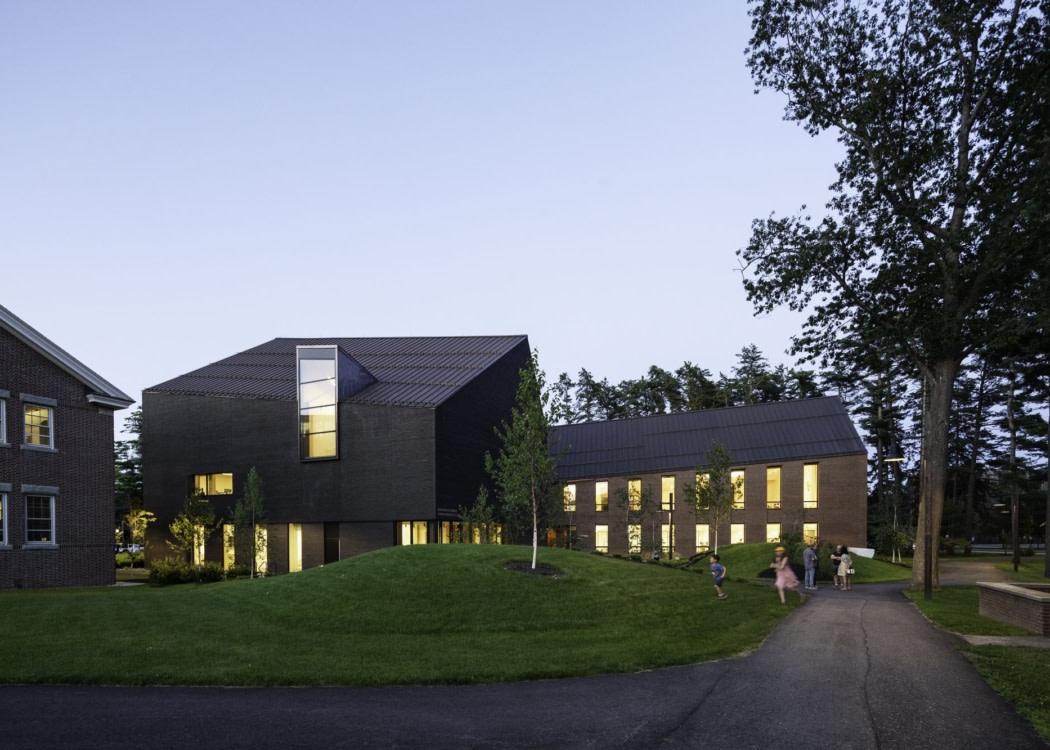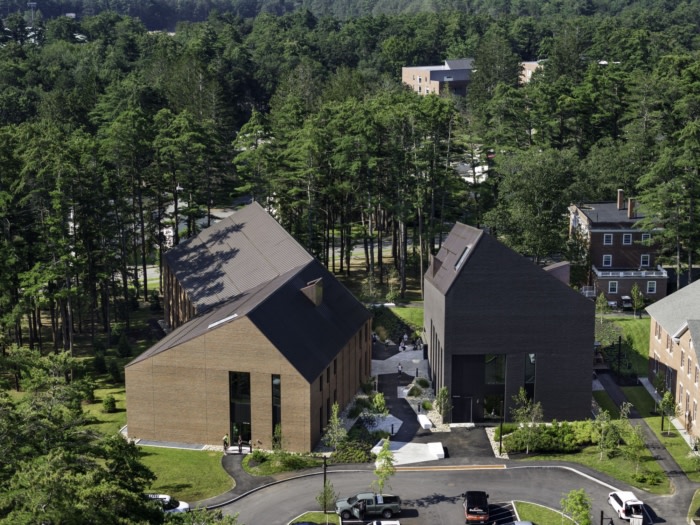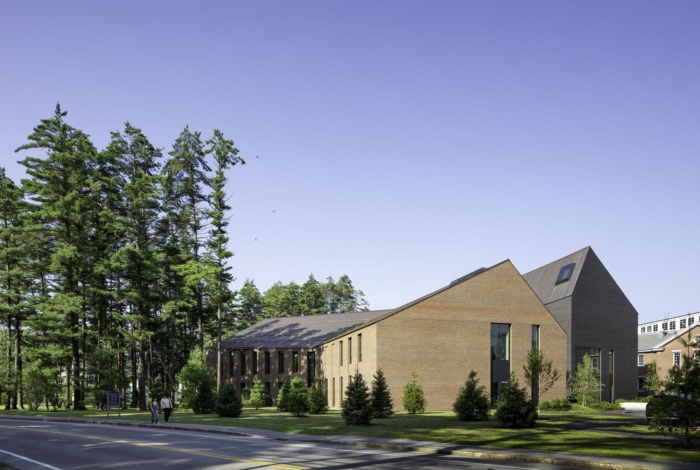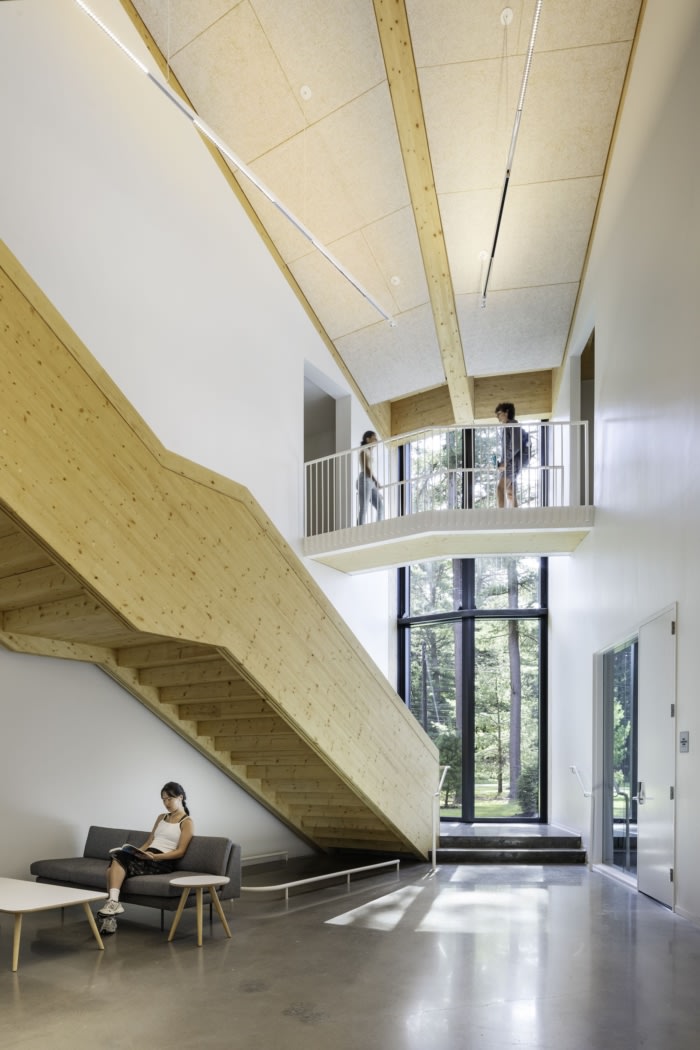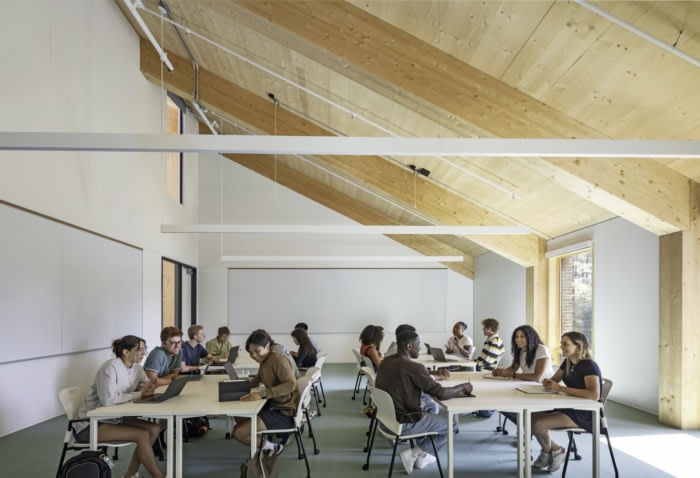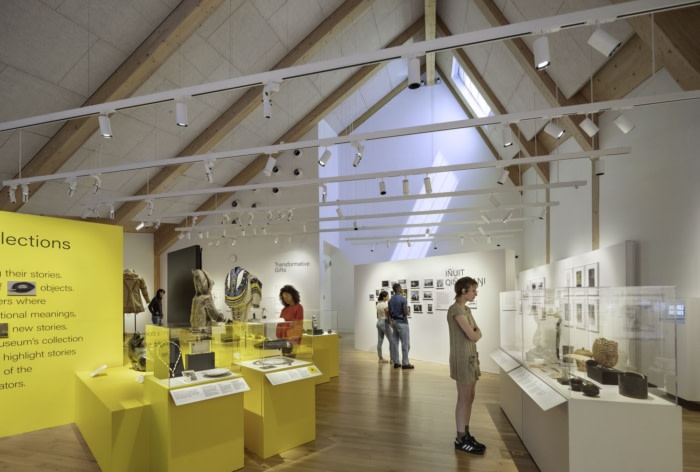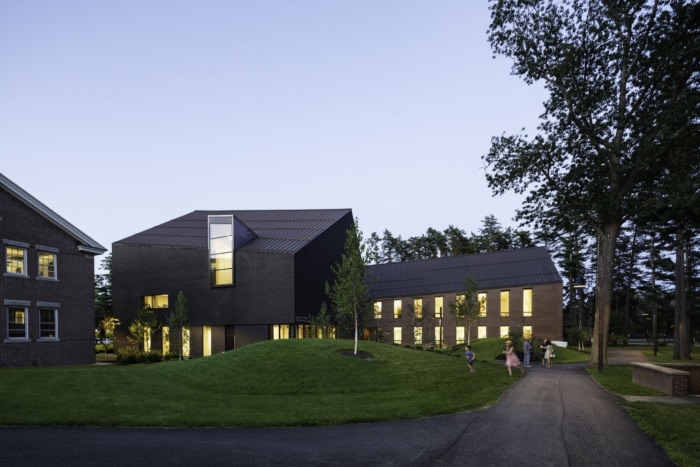Bowdoin College – Barry Mills Hall and the John and Lile Gibbons Center for Arctic Studies
HGA completed the Barry Mills Hall and the John and Lile Gibbons Center for Arctic Studies at Bowdoin College in Brunswick, Maine.
The new Barry Mills Hall and the John and Lile Gibbons Center for Arctic Studies at Bowdoin College are the first commercially-scaled mass timber buildings in the state of Maine, a state known for its abundant forests. The two new buildings offer teaching, research, and museum space to Bowdoin’s historic coastal campus.
Anchoring the southeast corner of Bowdoin’s campus, Mills Hall and the Gibbons Center replace an existing parking lot while fronting a grove of mature white pines. Although both buildings share a consistent timber expression on the interior, each has a distinct exterior presence. Mills Hall is campus red; the Gibbons Center is mottled black. Their steeply pitched rooflines play off each other from different vantage points, framing a new campus gateway from the north that meanders southwards into the Dudley Coe Quad.
With nods to Bowdoin’s red-brick campus fabric, Mills Hall is a two-story academic building that houses the Digital and Computational Studies and Anthropology departments. It features a 60-person cinema, four active-learning classrooms, 12 faculty offices, huddle spaces for student collaboration, and a vaulted event space that holds up to 300 people. Classrooms and offices afford views, plentiful daylight, tall ceilings, and operable windows for natural ventilation.
Gibbons Center is a cross-disciplinary hub dedicated to Arctic research and education, which includes a new home for Bowdoin’s Peary-MacMillan Arctic Museum. Besides two flexible museum galleries, the program houses a generous lobby, collections storage and support, offices, classrooms, and an archeology lab. A robust, high-performance building envelope and rigorous environmental controls allow the museum to protect and display sensitive artifacts.
The site design takes its cues from the tundra and ice flows of the Arctic. Excess soil from excavation was used to form mounds which were sculpted to look like snow drifts while discarded marble blocks were salvaged from a regional quarry and used for seating.
Site elements and regional granite pavers create “ice flows” that lead pedestrians through the site. River rock surrounds both buildings for stormwater retention. Surrounding the site is a grove of white pines. These trees were preserved and bolstered with new plantings—more than 80 regional trees to replace those lost during construction—to provide a more resilient pine grove for future generations.
The HGA-engineered mass timber structural system reduces the buildings’ embodied carbon footprint by approximately 75 percent when compared to a traditional steel structure, while the all-electric building systems promote a low net operational carbon footprint to power the development without the use of fossil fuels. Bowdoin College’s recent and ongoing investments in renewable energy near campus and elsewhere allow the buildings to operate using 100 percent renewable clean energy.
Design: HGA
Construction Manager: Consigli Construction Co.
Photography: Michael Moran

